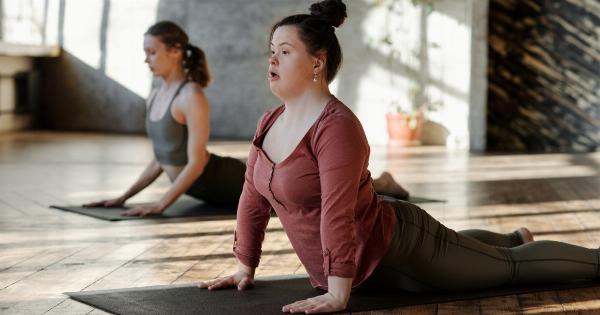Good posture plays a crucial role in our overall health and well-being. When we maintain proper posture, we can avoid a wide range of problems such as back pain, neck pain, joint stiffness, and even digestive issues.
However, due to sedentary lifestyles, improper sitting, and lack of exercise, many people struggle with maintaining correct posture. The good news is that with a comprehensive workout routine, you can power up your posture and reap numerous benefits.
Understanding the Importance of Good Posture
Before diving into the workout routine, it’s essential to understand why good posture matters. When we sit, stand, or move with proper alignment, our muscles work efficiently, which reduces the strain on our joints, ligaments, and tendons.
Additionally, maintaining good posture allows for optimal spinal alignment, which alleviates pressure on vertebral discs. This, in turn, minimizes the risk of disc herniation and reduces back pain. Moreover, good posture enhances breathing, digestion, and boosts confidence.
1. Core Strengthening Exercises
A strong core is essential for maintaining good posture. Start by incorporating exercises like planks, bird dogs, and deadbugs into your routine.
These exercises target the muscles in your abdomen, back, and pelvis, which are crucial to support your spine and maintain proper alignment.
2. Upper Back Strengthening
Weak upper back muscles can contribute to slouching and rounded shoulders. To combat this, add exercises like seated rows, bent-over rows, and reverse flyes to your routine.
These exercises target the muscles in your upper back, including the rhomboids, trapezius, and posterior deltoids, strengthening them and improving your posture.
3. Chest Opening Stretches
Tight chest muscles can pull your shoulders forward, causing a rounded posture. Incorporate stretches like doorway stretches, the yoga pose ‘cow face arms,’ and chest stretches with a foam roller or a resistance band.
These stretches will help open up your chest muscles and counteract the effects of slouching.
4. Neck and Shoulder Relaxation
Stress and tension can often lead to neck and shoulder tightness, affecting our posture. Practice exercises like neck rotations, shoulder rolls, and gentle neck stretches to release tension and improve flexibility in these areas.
It is crucial to maintain a relaxed and neutral position for your neck and shoulders throughout the day.
5. Hip Mobility Exercises
Your hips play a significant role in maintaining proper posture. Incorporate exercises like hip flexor stretches, glute bridges, and squats to improve hip mobility and stability.
By strengthening and increasing mobility in your hips, you can alleviate strain on your lower back and maintain a more upright posture.
6. Posture Correcting Strengthening Exercises
Specific exercises can directly target and strengthen the muscles responsible for maintaining good posture. These include exercises like supermans, wall angels, and cervical retraction exercises.
By focusing on these exercises, you will improve the strength and endurance of the key muscles needed to maintain proper alignment.
7. Balance and Stability Training
Balance and stability are essential components of good posture. Incorporate exercises like single-leg stands, bosu ball exercises, and yoga or Pilates into your routine.
These exercises challenge your body’s ability to maintain balance, promoting better posture overall.
8. Incorporate Postural Awareness
In addition to specific exercises, it is crucial to maintain postural awareness throughout the day. Pay attention to your alignment when sitting, standing, or performing any movements.
Avoid slouching, keep your shoulders relaxed, and engage your core muscles to support your spine.
9. Ergonomics at Work
If you have a desk job, it’s essential to optimize your workspace ergonomics. Adjust your chair to the correct height, use a supportive chair with lumbar support, and position your computer screen at eye level.
These adjustments will promote proper alignment and reduce strain on your neck, shoulders, and back.
10. Seek Professional Help
If you’re struggling with persistent postural issues or chronic pain, consider seeking professional help.
Physical therapists, chiropractors, and yoga instructors can provide personalized guidance to address your specific posture-related concerns and tailor exercises and stretches to your needs.
Conclusion
Improving your posture is essential for your overall health and well-being.
By incorporating a comprehensive workout routine that includes core strengthening exercises, upper back strengthening, stretches, relaxation exercises, hip mobility exercises, posture-correcting exercises, balance and stability training, and maintaining postural awareness, you can power up your posture. Remember to pay attention to ergonomics at work and seek professional help if needed. With consistency and dedication, you can achieve improved posture and enjoy the benefits it brings.





























